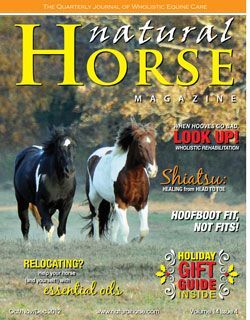Brief Descriptions of Some Homeopathic Medicines Commonly Used with Wildlife First Aid
Shirley J. Casey, MBA and Betty Jo Black, DVM
It is critical to follow standard rehabilitation practices such as supplemental heat, good diets, appropriate caging, and, of course, veterinary consultation.
1. Aconitum napellus (Acon) – Extremely useful for INTENSE FEAR. Severe shock, especially shock from fright or accident. Symptoms are intense, painful, and acute (occur quickly). Hemorrhages are bright red. May be very restless or timid. Senses are acute. Remote affects of fright or terror. Acute inflammation and infection. Acon is often the first remedy given to an adult or older juvenile wild animal brought into rehabilitation since they are in shock and terrified from being captured and handled by a predator (human). In cases where fear is a primary reason for selecting Acon, it is often only given one time at a 30c, 200c or 1m potency. If initially selected due to animal’s severe fear, it may be followed a short time later (15 to 30 minutes) by another remedy for another condition, such as Arn.
2. Arnica montana (Arn) – Often selected as the first remedy for TRAUMATIC INJURY, such as bruises, head trauma, sprains, fractures. Extremely useful in treating injuries, falls, blows, contusions and shock from injury. Patient does not want to be touched. Cannot get comfortable. Sore, lame, bruised feeling with tendency for bruises to hemorrhage. Some vertigo (dizziness) after head trauma. Overuse of muscles. Tends to be cool. A very common homeopathic medicine used with wildlife since so many wild animals arrive in rehabilitation as a result of trauma (falls, accidents). Considered when a trauma, however remote, may have caused the problem.
3. Arsenicum album (Ars) – Useful for sudden weakness, restlessness and anxiety. Prostration seems out of proportion from the illness. CADAVEROUS ODORS, such as from diarrhea. Intense thirst; drinks little and often, which distresses the stomach and may be vomited immediately. Loss of appetite, with thirst. Twitching, trembling extremities. A wide variety of conditions can result in these symptoms, including exposure to some toxins and viruses; infections; eating rotten food, especially fruit or meat; or emotions.
4. Calendula (Cal) – Supports healing of open, torn, cut, lacerated, ragged or suppurating wounds. NOT USED WITH DEEP PUNCTURES. Hemorrhage after lacerations or scalp wounds. Promotes healthy granulations. Can be used topically (dissolved in water) or orally. Continue to follow standard wound management protocols.
5. Carbo vegetabilis (Carb-v) – General WEAKNESS, easily tired. EXHAUSTING DISEASE (e.g., respiratory distress, diarrhea, dehydration). ICY COLD and does not want heat. Some digestive problems.
6. Cinchona officialis (China) – Used to treat debility from FLUID LOSS; PROFUSE, EXHAUSTING DISCHARGES, including diarrhea, hemorrhage, loss of vital fluids. Variety of gastro-intenstinal and stool problems. Oversensitive to noise. Used conjunction with the administration of isotonic fluids.
7. Gunpowder (Gunp) – Blood poisoning or septic suppurations after wounds. Wounds that are expected to become infected or septic (sometimes used prophylatically). Continue to follow standard wound management protocols. External use of Calendula may be complementary in some cases.
8. Hepar sulphuris (Hep) – Small wounds fester and become infected. OVERSENSITIVE to all impressions, cold, pain, noise, odors. Easily irritated. Chilly. The higher potencies may abort suppuration (30c), the lower may promote it (less than 30c). There are other homeopathic medicines used for different types of infections.
9. Hypericum (Hyper) – The great remedy for INJURIES TO THE NERVES, especially fingers, toes, nails, tail, coccyx. Punctured or lacerated wounds. Useful for excessive painfulness or crushing wounds. Concussions to the spine or brain. Spasms after injury. Effects of shock.
10. Ignatia (Ign) – Conditions arriving from profound emotion, such as GRIEF or fright. Takes deep breath for relief (sighs, yawns). Hungry but loses appetite. Some neurological symptoms. Especially considered when an animal with close connections to mate, family, flock, or herd is separated from them, such as geese, corvids, raptors, fawns or juvenile rabbits. Often only a single dose of an Ign 30c or 200c has been needed in such cases.
11. Ledum (Led) – PUNCTURE wounds, including bites, stings, injections, and other intentional wounds. Puncture wound feels cold. Supports puncture healing from ‘inside out’. Bruises are swollen, puffy, and purple. Avoids placing weight on painful foot.
12. Lycopodium (Lyc) – Affects NUTRITION; WEAKNESS OF DIGESTION. Some diarrhea; bloat after eating. Easy satiety (becomes full after eating a small amount). Many gastrointestinal and urinary symptoms, including lienteric stool. Malnutrition. Symptoms may move from right to left. Awakens angry.
13. Nux vomica (Nux-v) – DIGESTIVE DISTURBANCES, especially after eating improper diet or overeating. Angry, irritable, impatient. Cannot bear noises, odors, light, etc. Possible vertigo. Easily chilled.
14. Natrum sulphuricum (Nat-s) – Head symptoms AFTER INJURY TO THE HEAD (follows Arnica well). Mental dullness. Vertigo. Head tips to the side. Many head symptoms. Some spinal injuries. Some gastrointestinal symptoms.
15. Phosphorus (Phos) – SUDDENNESS of symptoms. Hemorrhage of bright red blood. WOUNDS BLEED MUCH EVEN IF SMALL. SUDDEN RESPIRATORY DIFFICULTY. Many respiratory symptoms. Indifferent. Great weakness after stool, debilitating diarrhea.
16. Podophyllum (Podo) – Profuse, offensive, gushing, INVOLUNTARY and PAINLESS LIQUID STOOL. PROLAPSED RECTUM during or after stool. It is still necessary to follow other protocols to reduce diarrhea and dehydration, such as treating for parasites.
17. Ruta graveleons (Ruta) – BONE BRUISE. Sprains (Ruta would be given after Arnica). Restlessness. Injured tendons and joints. Weakness in limbs from bruising.
18. Symphytum (Symph) – Injuries to BONE, PERIOSTEUM, and CARTILAGE including FRACTURES. Used after Arnica for bone injuries. Eye injury and pain after blow or blunt trauma; TRAUMATIC INJURIES OF THE EYE. Follow standard fracture management protocols, such as stabilizing the fracture and restricting patient’s movements. Symph should NOT be administered until after the fracture is set.











